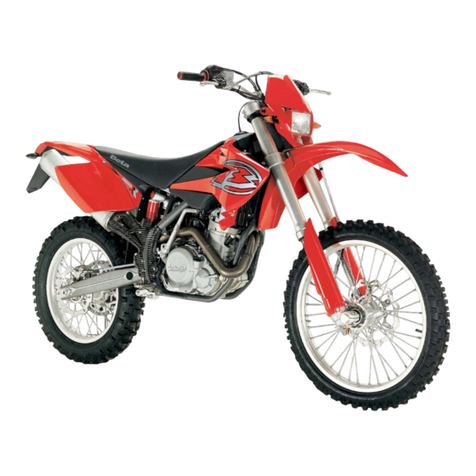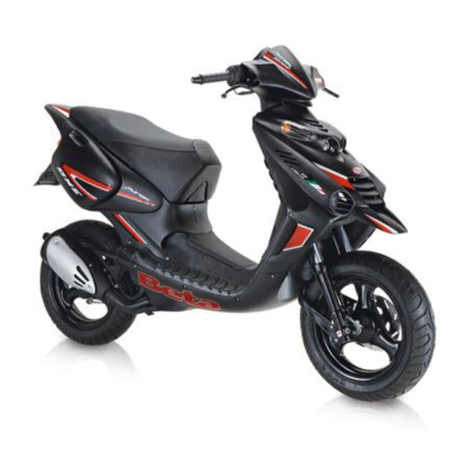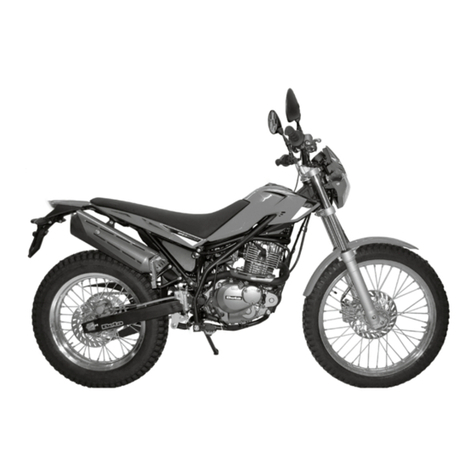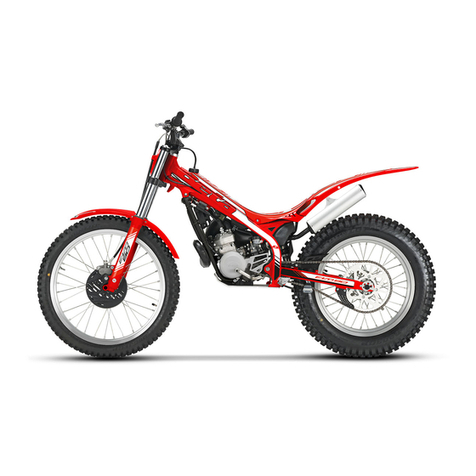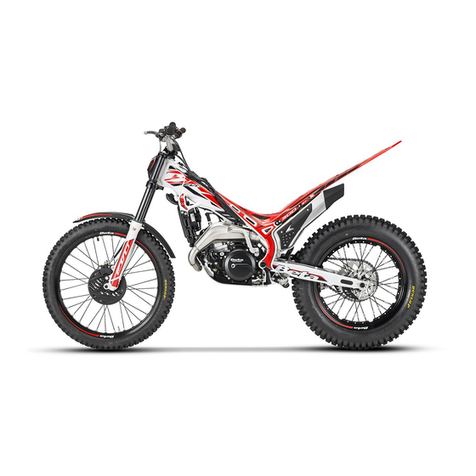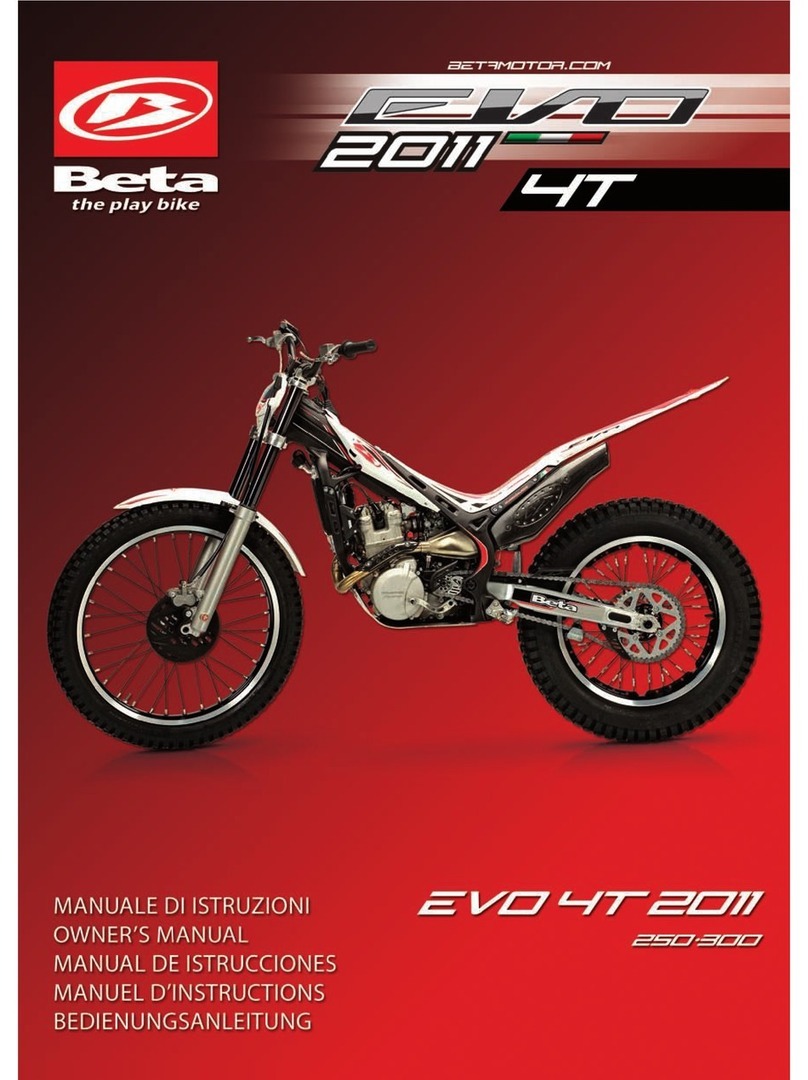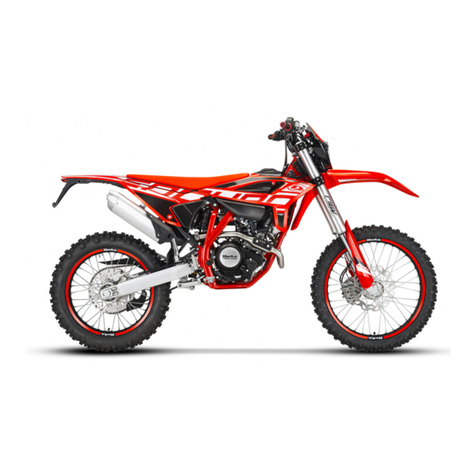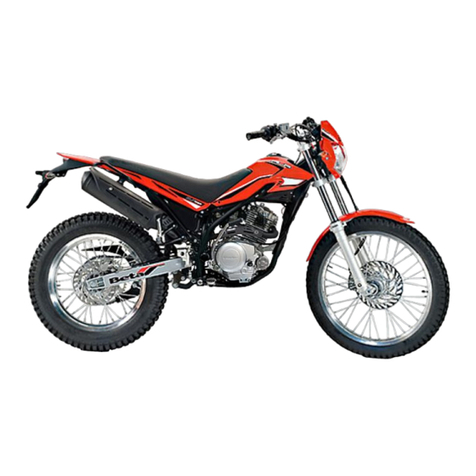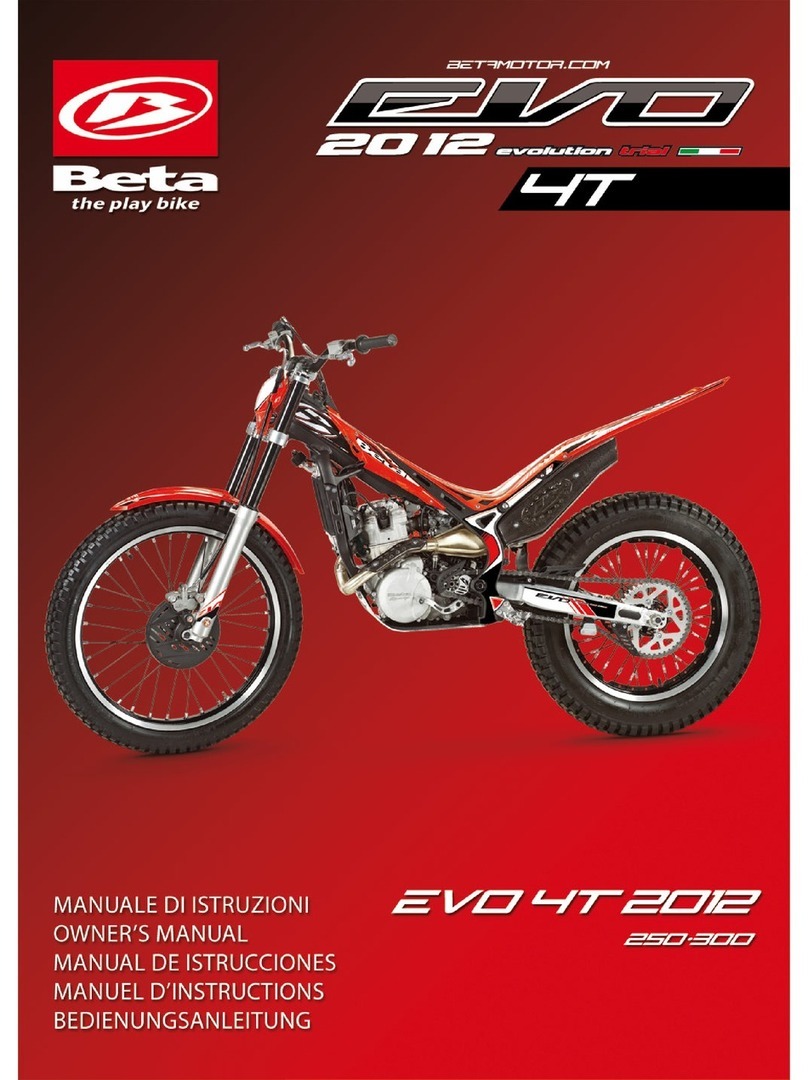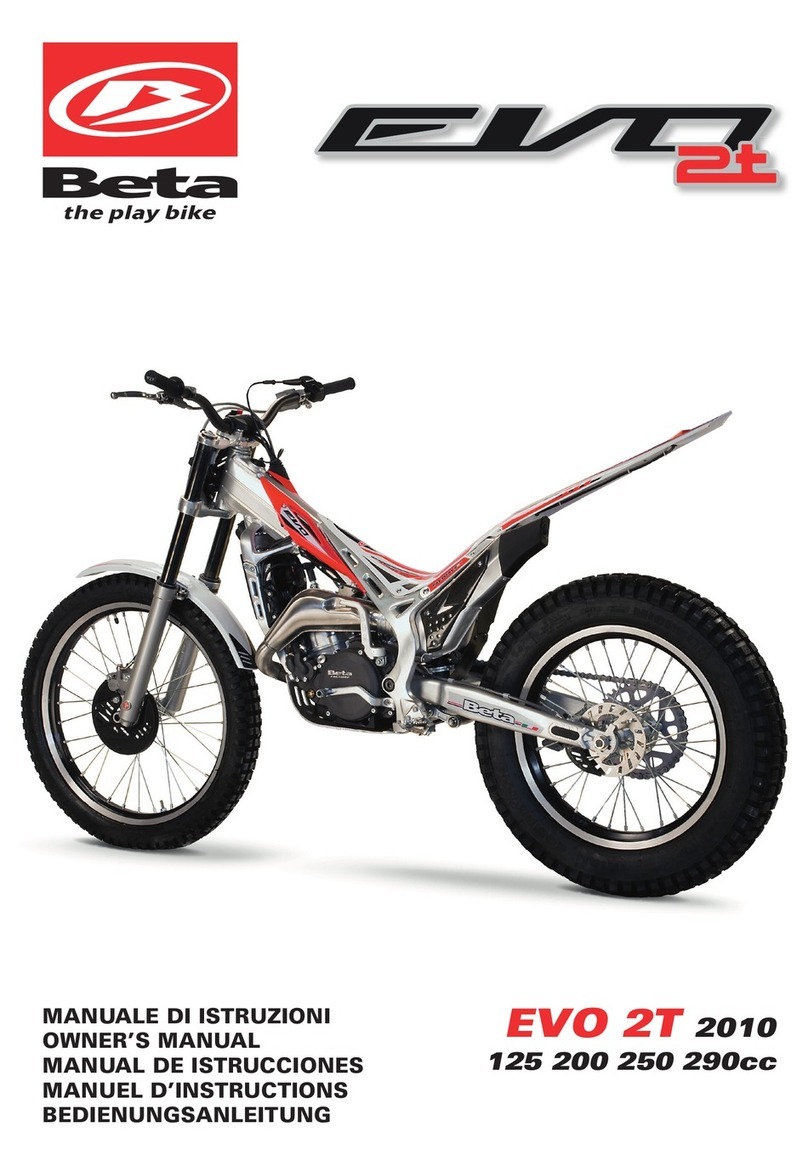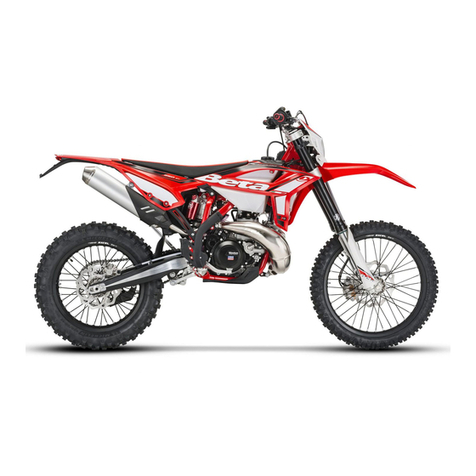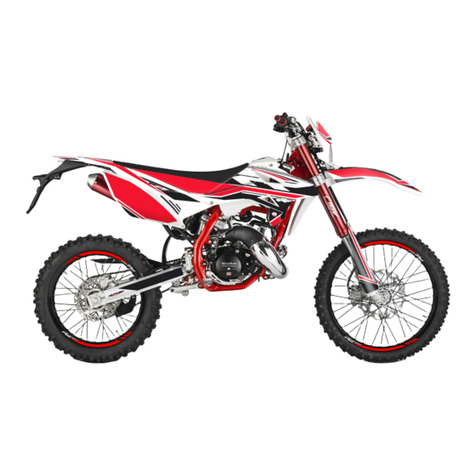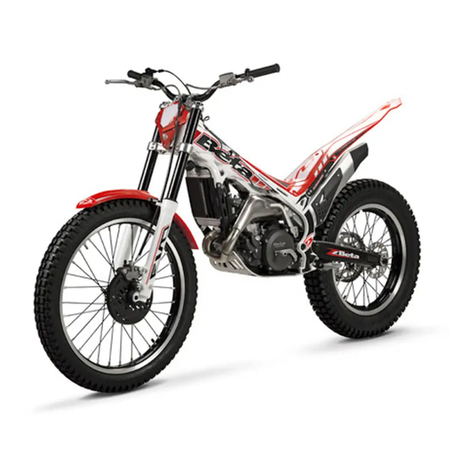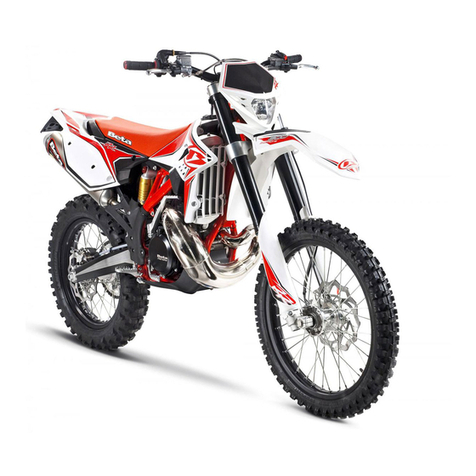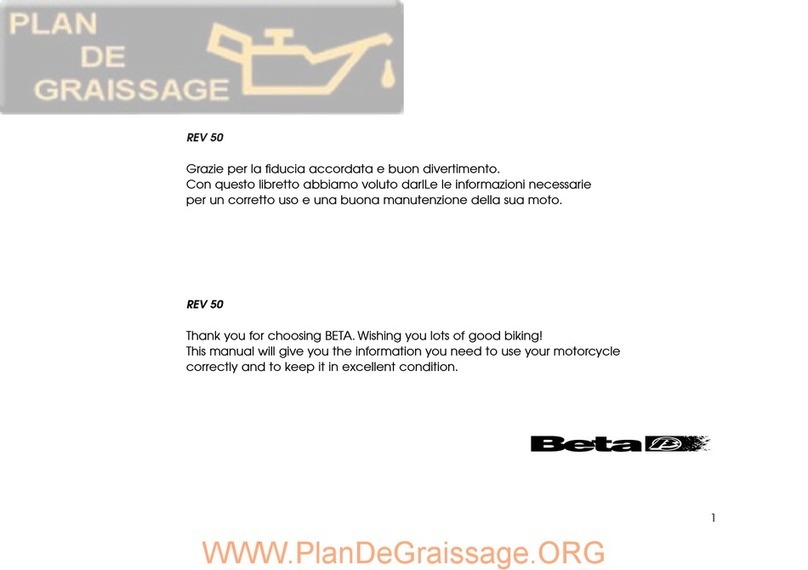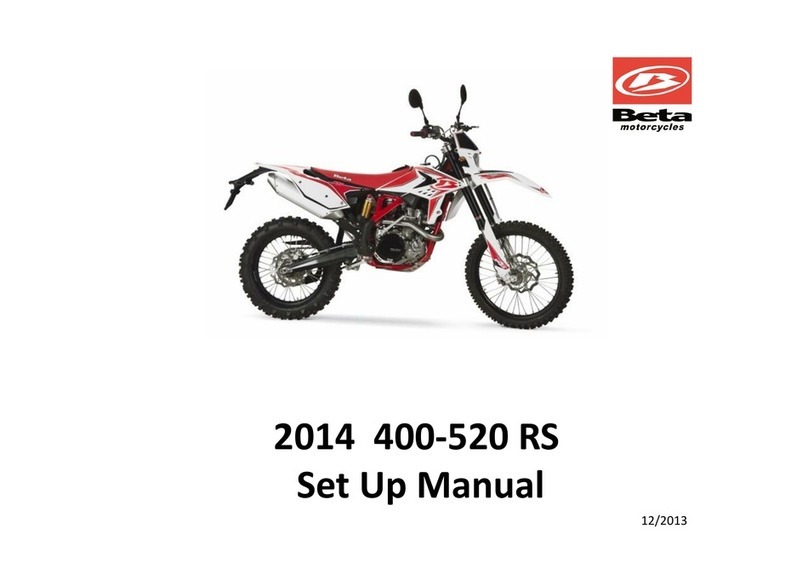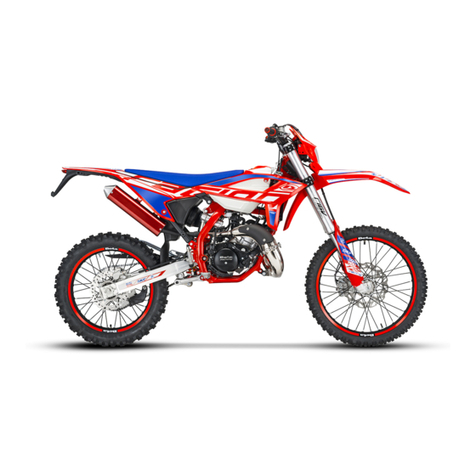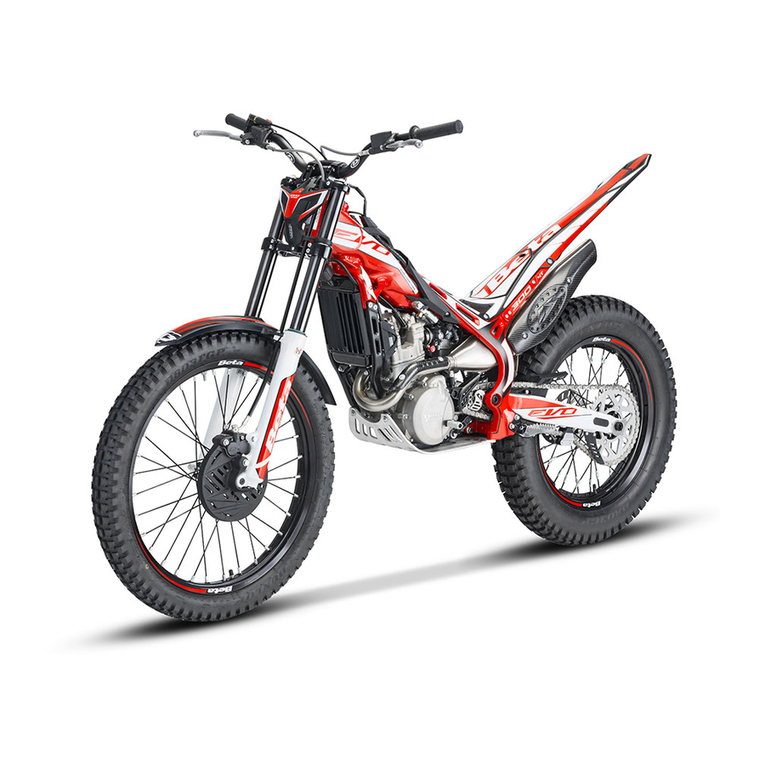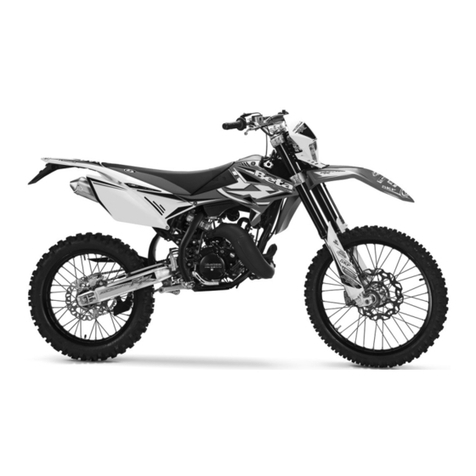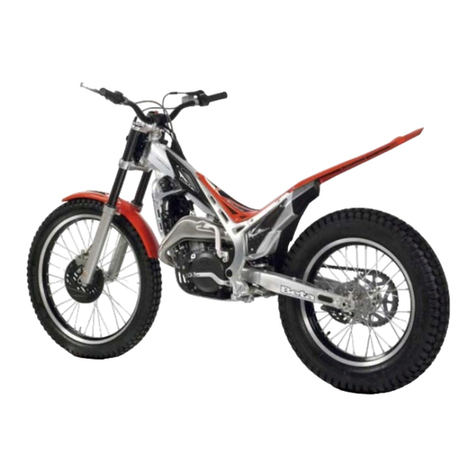10 Workshop manual RR 4T - 400 - 450 - 525
SAFETY
Carbon monoxide
• Exhaust gases contain carbon monoxide (CO), a poisonous gas that can cause loss of consciousness and even death.
• Before starting the engine, ensure that the area is well ventilated. Never run the engine indoors.
• The engine can be run indoors only if the area is equipped with specially designed exhausters.
Petrol
• Petrol is highly flammable and, under certain circumstances, explosive.
• Keep all heat sources, sparks and open flames away from the working area.
• Always work in a well ventilated area.
• Never use petrol as a cleaning solvent. Avoid handling it unless absolutely necessary.
• Do not use petrol for cleaning components that need to be blown with compressed air.
• Keep out of the reach of children.
Engine oil
• Repeated and prolonged contact of engine oil with the skin can cause skin diseases.
• In case of contact, wash the contaminated parts with soap and water as soon as possible.
• In case of eye contact, rinse abundantly with water and seek medical attention.
• In case of ingestion, immediately seek medical attention without causing vomit as this could result in the oil being
breathed into the lungs. If the product is believed to have been breathed into the lungs, immediately transport the af-
fected person to the nearest hospital.
• Spent oil contains substances that are dangerous to the environment. Oil can be renewed only by operators that are
equipped for the disposal of spent oils in compliance with applicable laws.
• Avoid disposing of spent oil in the environment.
• Keep out of the reach of children.
Coolant
• Under certain circumstances the ethylene glycol contained in the coolant is flammable and its flame is invisible. Should
the ethylene glycol ignite, its flame, though invisible, could cause serious burns.
• Avoid bringing the coolant into contact with hot parts as these could ignite it.
• The coolant (ethylene glycol) can irritate the skin and is poisonous if ingested.
• In case of skin contact, immediately take off any contaminated clothes or footwear and wash abundantly with soap and
water. In case of eye contact rinse abundantly with clean water and immediately seek medical attention. If the coolant
is ingested, avoid causing vomit as this could cause the product to be breathed into the lungs. Administer clean water
and immediately transport the affected person to the nearest hospital and show the product to health personnel.
• If anybody is exposed to a high concentration of coolant vapours, transport them to an area where they can breath un-
polluted air. If necessary seek medical assistance.
• Do not remove the radiator cap when the engine is hot. Since the coolant in the radiator is subjected to high pressures,
it could spurt out and cause burns.
• The coolant contains substances that are harmful to the environment. The coolant can only be renewed by operators
equipped for the disposal of spent oils/coolant in compliance with the regulations in force.
• Avoid disposing of the coolant in the environment.
• Keep out of the reach of children.
WARNING The information contained in this paragraph is designed to minimize the risks the operator runs
when working on the vehicle.
